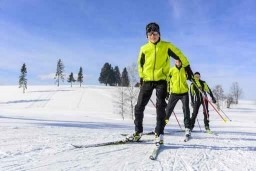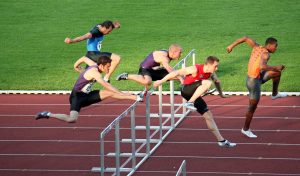How Can We Encourage Youth to Participate in Sport?
 There is extensive research on the health benefits of being physically active; despite this fact, a great number of Canadian youths are still not meeting the recommended level of daily physical activity. Being physically active not only improves physiological outcomes but research has shown it can also improve cognitive function and mental health.
There is extensive research on the health benefits of being physically active; despite this fact, a great number of Canadian youths are still not meeting the recommended level of daily physical activity. Being physically active not only improves physiological outcomes but research has shown it can also improve cognitive function and mental health.
For youth to participate in physical activity there are many factors that come into play. To best understand these reasons, we have to examine some of the barriers.
- Personal barriers are usually under the control of the participant. These could include motivation, lack of time, energy levels, education and self-efficacy. Modifying ones’ behavior can have a positive influence on creating good habits.
- Environmental barriers such as a lack of facilities, unsafe neighborhoods, weather and occupation can influence sport participation, as they are not under the control of the individual. Supportive policies, safe facilities and financial resources can limit this barrier.
- Social barriers such as socioeconomic status, family influence and culture can limit involvement due to cost and attitudes towards participation. Proper financial and information resources can minimize these outcomes.
To address some of these barriers there have been several recommendations that policy makers, community organizers and other stakeholders may want to consider.
- The majority of youth spend most of their day in schools. Well-designed PE programs and trained instructors in the education system can accommodate the recommended daily moderate to vigorous physical activity. They also have the ability to promote active transportation and implement before and after school physical activity programs.

- Schools and community organizations can develop partnerships to provide physical activity before school, after school and during the summer holidays. Organizations such as the Boys and Girls club can oversee programs that take place outside of school hours promoting both structured and unstructured play.
- Preschool and childcare centers can play an integral part in promoting the active start stage of the LTAD model for children ages 0-6. Such programs provide an opportunity to develop physical literacy by teaching basic movement skills at an early age.
- Post-secondary institutions can provide great opportunities for physical activities by offering courses, intramural programs, club sports and accessible facilities.
To overcome sport participation barriers there are policies and programs that have been created both locally, provincially and federally in promoting physical activity. The education sector can be a driving venue to increasing youth participation and promote these policies and programs. By improving the health of our youth now we have a greater chance of producing healthier, active adults in the future.
References Available from the SIRC Collection:
- Beaulac J, Bouchard D, Kristjansson E. Physical Activity for Adolescents Living in a Disadvantaged Neighbourhood: Views of Parents and Adolescents on Needs, Barriers, Facilitators, and Programming. Leisure/Loisir: Journal Of The Canadian Association For Leisure Studies. July 2009;33(2):537-561.
- Casper J, Bocarro J, Kanters M, Floyd M. “Just Let Me Play!”–Understanding Constraints That Limit Adolescent Sport Participation. Journal Of Physical Activity & Health. January 2, 2011;8:S32-S39.
- Fuller R, Percy V, Bruening J, Cotrufo R. Positive Youth Development: Minority Male Participation in a Sport-Based Afterschool Program in an Urban Environment. Research Quarterly For Exercise & Sport. December 2013;84(4):469-482.
- Ng R. Understanding Sport Participation Motivation and Barriers in Adolescent 11-17: An Introduction of Rowing Activity in Schools. Asian Journal Of Physical Education & Recreation. November 2011;17(2):66-74.
- Tomik R, Olex-Zarychta D, Mynarski W. Social values of sport participation and their significance for youth attitudes towards physical education and sport. Studies In Physical Culture & Tourism. June 2012;19(2):99-104.
- Ya-Wen H, Chih-Ping C, Nguyen-Rodriguez S, McClain A, Belcher B, Donna S. Influences of Social Support, Perceived Barriers, and Negative Meanings of Physical Activity on Physical Activity in Middle School Students. Journal Of Physical Activity & Health.February 2011;8(2):210-219.
